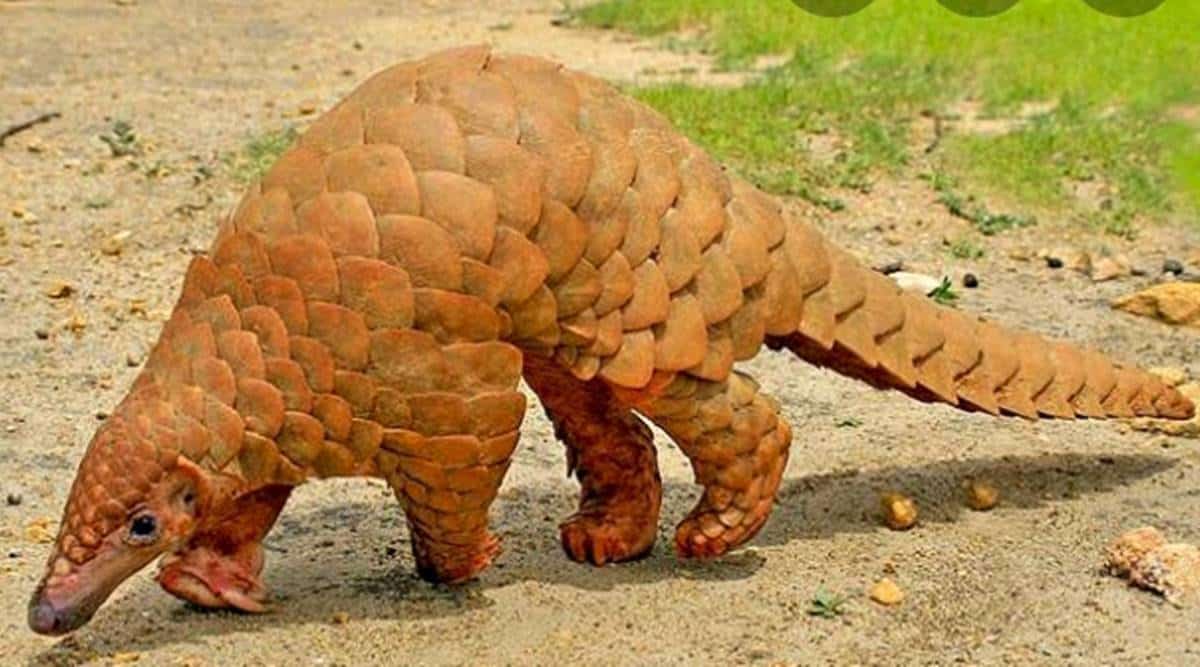What’s in today’s article?
- Why in News?
- What is TRAFFIC (Trade Records Analysis of Flora and Fauna in Commerce)?
- What Exactly is an Indian Pangolin?
- What Steps are Being Taken to Protect Pangolins?
- News Summary Regarding Pangolins and TRAFFIC’s Findings
Why in News?
- On the eve of World Pangolin Day (Feb 18), a not-for-profit organisation – TRAFFIC, has reported that 1,203 pangolins have been found in illegal wildlife trade in India from 2018 to 2022.
- An earlier analysis of illegal pangolin trade in India by TRAFFIC in 2018 reported poaching of nearly 6,000 pangolins between 2009 and 2017.
What is TRAFFIC (Trade Records Analysis of Flora and Fauna in Commerce)?
- Also known as the Wildlife Trade Monitoring Network, TRAFFIC is a global non-governmental organisation monitoring the trade in wild animals and plants with focus on biodiversity and sustainable development.
- It was originally created in 1976 as a specialist group of the Species Survival Commission of the IUCN and evolved into a strategic alliance of the WWF and the IUCN.
- It also provides trade information and expert analysis to the decision-making process at CITES (such as through the Elephant Trade Information System) to ensure that international trade in wildlife remains at sustainable levels.
What Exactly is an Indian Pangolin?
Image Caption: Indian Pangolin (Key Facts)
- Also called thick-tailed pangolin and scaly anteater, it is a pangolin native to the Indian subcontinent.
- Like other pangolins, it has large-overlapping scales (colour varies depending on the colour of the earth in its surroundings) on its body which act as armour.
- An insectivore, it can also curl itself into a ball as self-defence against predators such as the tiger.
- It is nocturnal and found in various types of tropical forests as well as open land, grasslands and degraded habitats, including in close proximity to villages.
- The species can adapt well to modified habitats, provided its ant and termite prey remains abundant.
- Indian Pangolin is widely distributed in India, except the arid region, high Himalayas and the North-East.
- It can be found at an elevation up to 2500 m and also occurs in Bangladesh, Pakistan, Nepal and Sri Lanka.
- Other than regulating the population of insects, the pangolin is an ‘ecosystem engineer’ that builds burrows that help circulate soil organic matter, increase soil moisture and aeration, and affect plant community succession.
- It is threatened by hunting for its meat, traditional medicine and illicit international trade.
What Steps are Being Taken to Protect Pangolins?
- TRAFFIC is mapping pangolin trade hubs, conduits, transportation, high poaching areas and drivers in relation to poaching and illegal trafficking of pangolins.
- In 2015, TRAFFIC, in partnership with WWF-India and Wildlife Crime Control Bureau (WCCB) launched a social media campaign to create awareness towards curbing illegal trade in pangolins.
- In 2020, the Madhya Pradesh forest department announced the first-ever successful radio-tagging of the Indian pangolin.
- In 2020, the Maharashtra forest department became the first state in India to have a dedicated action plan for conservation of pangolins.
- Sahyadri Nisarga Mitra (Ratnagiri, Maharashtra, India) – an NGO, is involved in awareness and sensitisation activities for the local community in the identified pockets.
News Summary Regarding Pangolins and TRAFFIC’s Findings
- Pangolins are among the most trafficked wild mammals globally and India is home to two species:
- The Indian Pangolin – found across the subcontinent and the Chinese Pangolin – found across a larger area in south Asia.
- Bihar, West Bengal, and Assam see the presence of both.
- Both species are included under India’s Schedule I of the Wildlife Protection Act and are also in Appendix I of the CITES.
- The Indian Pangolin has been classified as ‘Endangered’ and the Chinese Pangolin as ‘Critically Endangered’ by the IUCN Red List of Threatened Species.
- The publication, titled ‘India’s Pangolins Buried in Illegal Wildlife Trade’, has tracked 342 total incidents during this time period and 8 incidents of online trading were also recorded.
- Up to 24 States and one UT saw seizures of pangolins and their derivatives.
- Odisha reported the maximum number of incidents, with 154 pangolins in 74 seizures.
- It was followed by Maharashtra with 135 pangolins in 47 seizure incidents.
- Up to 50% of seizures included live pangolins and 40% involved pangolin scales, poached mainly for international markets in China and southeast Asia for their scales, which are used as an ingredient in traditional medicines.
- Pangolin meat is also considered a delicacy and consumed for its alleged medicinal properties.
- There is an imperative need to focus on pangolins, strengthen their protection and conservation for their future survival.
- The publication calls for cooperation and collaboration for protection and conservation of the species, through DNA-based technologies and information sharing.
Q1) How many species of Pangolin are found in India?
India is home to two species: The Indian Pangolin and the Chinese Pangolin. Both species are included under Schedule I of the Wildlife Protection Act and are also in Appendix I of the CITES. The Indian Pangolin has been classified as ‘Endangered’ and the Chinese Pangolin as ‘Critically Endangered’ by the IUCN Red List of Threatened Species.
Q2) What innovative steps have been taken to save pangolins in India?
Pangolins are among the most trafficked wild mammals globally. In 2020, the Madhya Pradesh forest department announced the first-ever successful radio-tagging of the Indian pangolin. In 2020, the Maharashtra forest department became the first state in India to have a dedicated action plan for conservation of pangolins.
Source: Over 1,000 pangolins poached and trafficked in India between 2018 and 2022 | WWF India
Last updated on January, 2026
→ Check out the latest UPSC Syllabus 2026 here.
→ Join Vajiram & Ravi’s Interview Guidance Programme for expert help to crack your final UPSC stage.
→ UPSC Mains Result 2025 is now out.
→ UPSC Notification 2026 is scheduled to be released on January 14, 2026.
→ UPSC Calendar 2026 has been released.
→ UPSC Prelims 2026 will be conducted on 24th May, 2026 & UPSC Mains 2026 will be conducted on 21st August 2026.
→ The UPSC Selection Process is of 3 stages-Prelims, Mains and Interview.
→ Prepare effectively with Vajiram & Ravi’s UPSC Prelims Test Series 2026 featuring full-length mock tests, detailed solutions, and performance analysis.
→ Enroll in Vajiram & Ravi’s UPSC Mains Test Series 2026 for structured answer writing practice, expert evaluation, and exam-oriented feedback.
→ Join Vajiram & Ravi’s Best UPSC Mentorship Program for personalized guidance, strategy planning, and one-to-one support from experienced mentors.
→ UPSC Result 2024 is released with latest UPSC Marksheet 2024. Check Now!
→ UPSC Toppers List 2024 is released now. Shakti Dubey is UPSC AIR 1 2024 Topper.
→ Also check Best UPSC Coaching in India

















